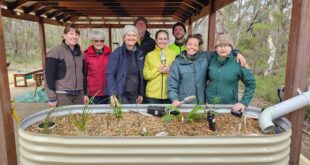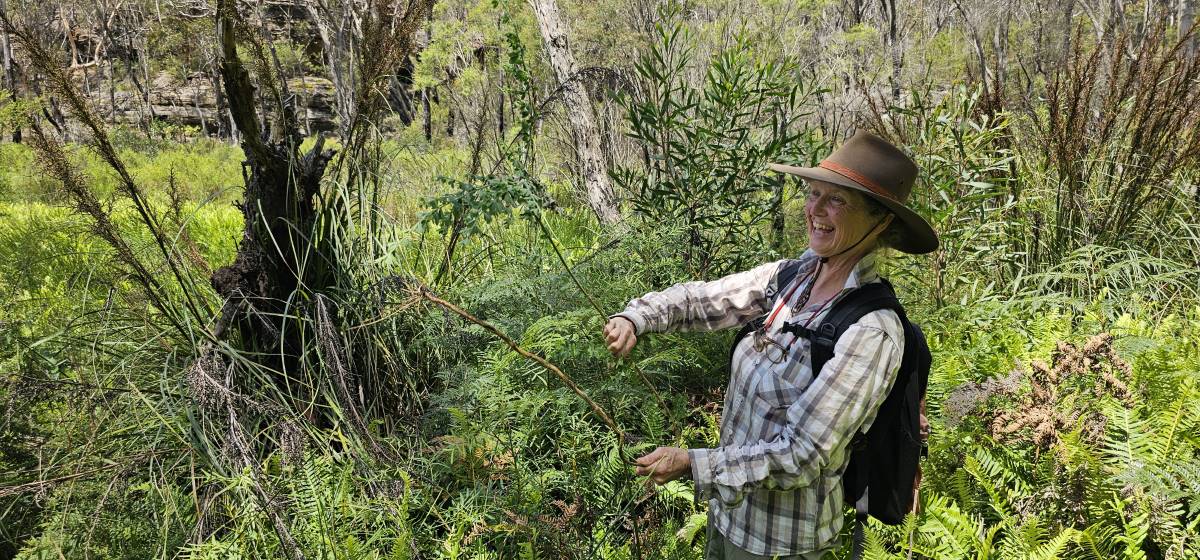
Marianne in the swamp pulling out broom. (Hamish Dunlop)
Story and photos by Hamish Dunlop
Marianne Bate is passionate about the bush, fascinated by people and ‘relentlessly positive’ about how we can better care for the land we live on. Meet Marianne, and discover the difference Bushcare and Landcare make to people and places in this piece by Hamish Dunlop.
Key Points:
- Marianne Bate is a Mt Victoria local who makes an amazing contribution to the environment and her community.
- She co-ordinates the Mt Victoria Bushcare and Landcare group and helps people with their private properties.
- Through her own actions and by inspiring others she positively impacts her own environment and everything downstream from it.
Marianne Bate makes a huge contribution to her community: both to the environment and people. She’s coordinated the Mt Victoria Bushcare and Landcare group for 10 years, and independently helps residents and landowners with their properties too.
New neighbours are welcomed, and Marianne organises around anyone who needs support. By all accounts, she also makes delicious cakes! Weeding and walking, especially when done together, are activities for which there is never enough time. In conversation, I find her incredibly modest and unassuming. She’s a self-confessed ‘doer’, but much of what I find out about her is through others: something indicative of her character.
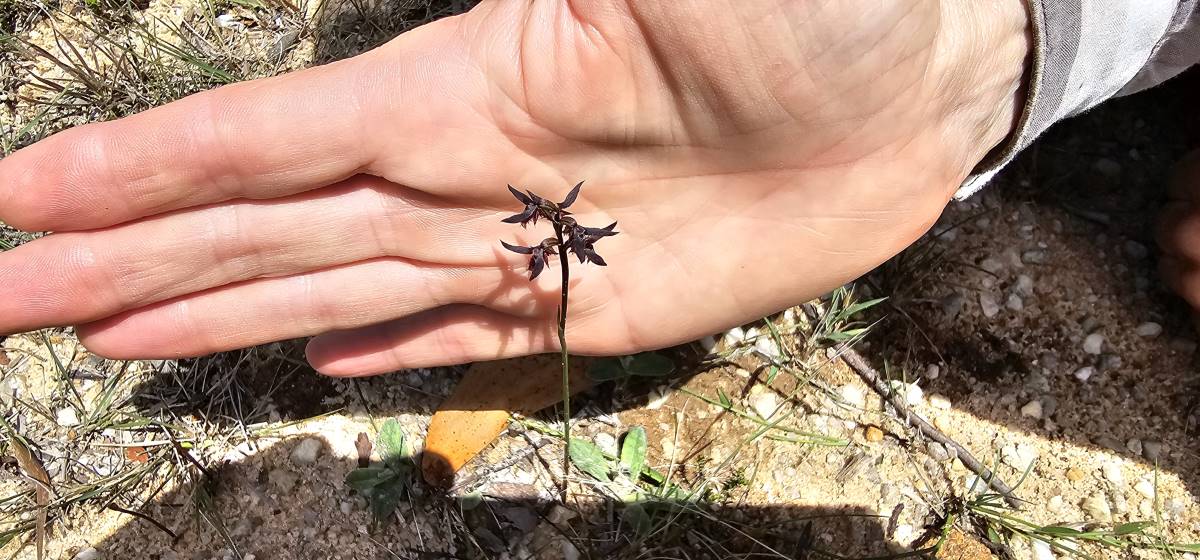
The Blue Mountains Midge Orchid. (Hamish Dunlop)
A native meadow in the making
Getting out into the field is something Marianne relishes. “I’ve got to show you what we did on Sunday. Our little team!” she enthuses, as we arrive at the Mount Victoria Cemetery. It’s not the weeds that take centre stage, but the natives. She points out trigger plants and bright yellow native daisies. When we find the first of three species of orchid, we are both captivated watching how parts of the flowers vibrate in the breeze.
The cemetery is on the edge of the upper Grose River catchment. Right next to the Mount Victoria village is where water first forms into creeks that, 40 km due east, flow into the Nepean. For the Bushcare group, it’s the home to some unique plant species. It’s an interface between private and crown land, and the National Park as well. “I think we have a responsibility,” Marianne says, “to manage how we influence our local area, especially with respect to what effects that has downstream.”
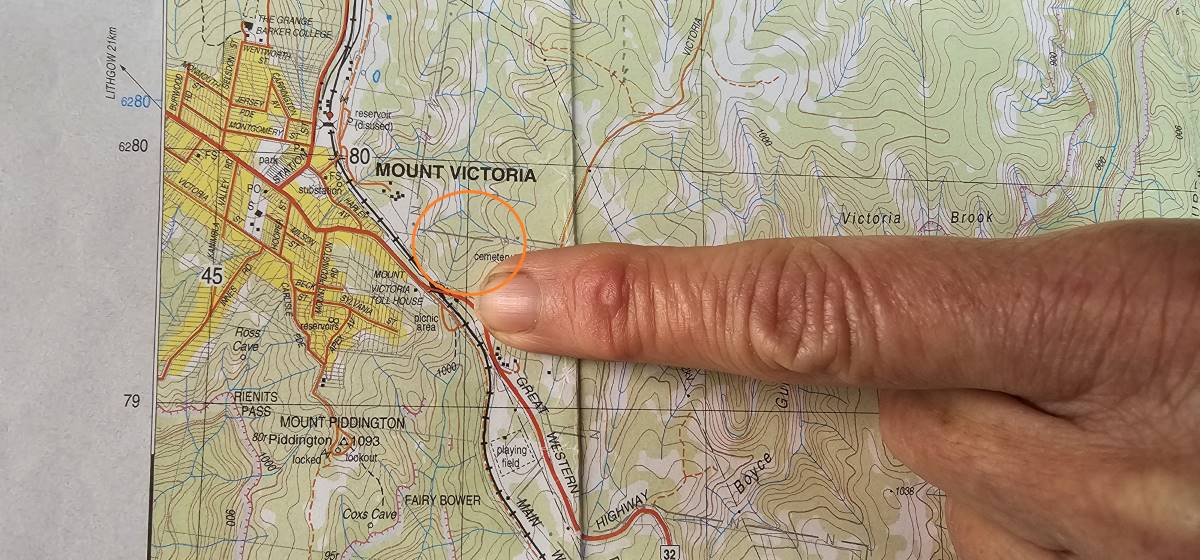
Marianne pointing to the creeks that form just east of Mount Vic Flicks. (Hamish Dunlop)
One of the orchid species we find at the cemetery is the Blue Mountains Midge Orchid. “It’s only found in the Mid and Upper Mountains,” Marianne tells me. We look at the coreopsis too, the yellow flower that adorns many roads and railway tracks. What the group dug out on Sunday is lying on bare patches of earth drying out in the sun. “It’s important to stop the coreopsis here,” she says. “The next stop is the National Park.”
Bushcare
Elissa McFarlane is a Bushcare Officer at Blue Mountains City Council. She’s been working with Marianne and the Mt Victoria Bushcare and Landcare group for two years. Elissa describes Marianne as warm and generous; someone who creates a sense of togetherness within the group. She says her knowledge of natives, weeds and the interconnectedness of ecosystems inspires people. “It takes someone special to bring people together in the way that Marianne does,” Elissa says.
Steve Gero is a teacher at Mt Victoria Public. He and his family are regulars at the Bushcare mornings. He echoes Elissa’s comments about Marianne’s welcoming and inclusive nature. “The way she talks to the kids is so lovely,” he says. They love going up to her and showing her things. She always stops what she’s doing and shows great interest: a real childlike excitement. Living down the road from Marianne is great too. We feel as if our families know each other. It’s special to have them in our lives.”

Coreopsis or Tickseed growing next to the railway line in Blackheath. (Hamish Dunlop)
Steve feels strongly about volunteering too. He says he feels good looking after little patches in the neighbourhood. He also thinks it’s important for his children. “Bringing the kids to Bushcare gets them outdoors. It exposes them to plants, plant identification and the idea of weeds and healthy ecosystems. It’s also important for them to see us volunteering. To get it on their radar that this is something that people do.”
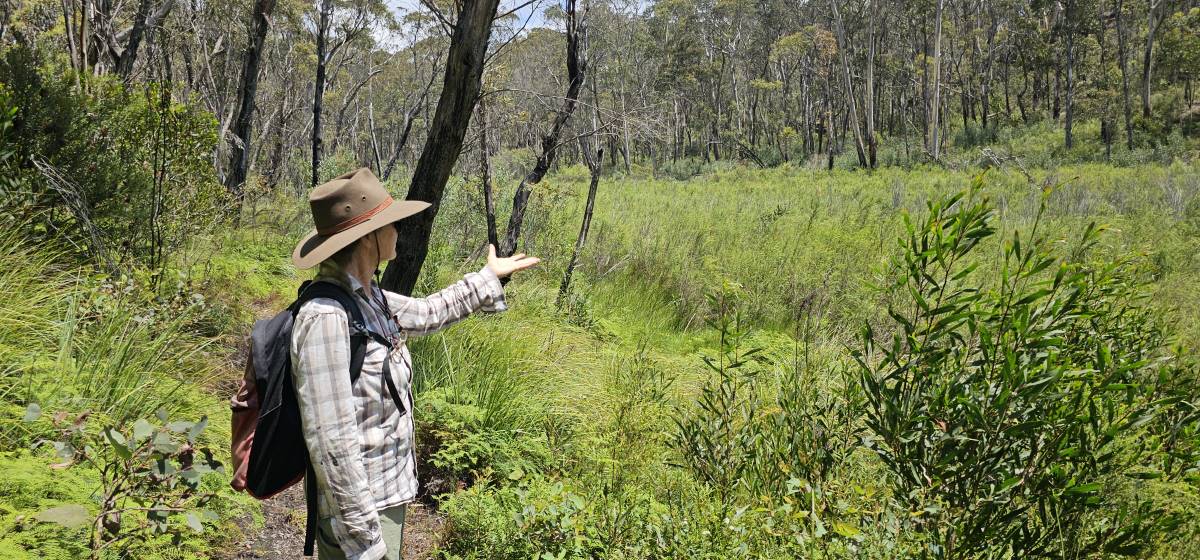
Marianne pointing to the swamp in the Grose River upper catchment. (Hamish Dunlop)
Irish Strawberry Trees
Marianne credits bushwalking as one of the main drivers behind her interest in addressing weeds. “When you know what pristine bush looks like, you see when non-native species start making inroads.” It was almost 30 years ago that she came across ‘a forest’ of Irish Strawberry tree saplings on the edge of the park while walking her dog.
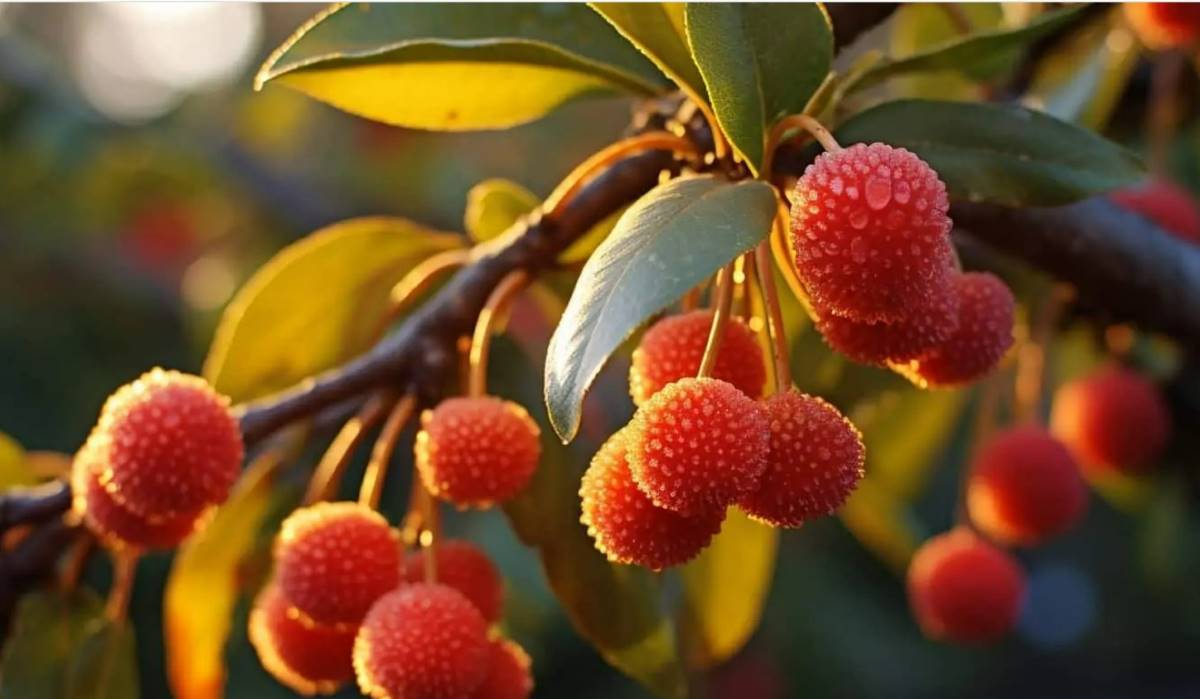
Irish Strawberry Tree fruit
Talking to Chris, the National Park’s ranger at the time, led to the Upper Grose River being added to the Great Grose Weed Program. “One thing I can say is that once you start seeing a weed, you can never unsee it! That makes walking my dog Milo with Ian quite challenging at times!”
The power of observation
Observation and looking for the causes of things is one of Marianne’s well-honed skills. “Finding the first lot of Irish Strawberry trees on the edge the National Park taught me something about how residential areas effect the land around them,” she says. “The saplings came from the trees that lined the highway. Seeds can be washed down and birds can spread seeds too.”
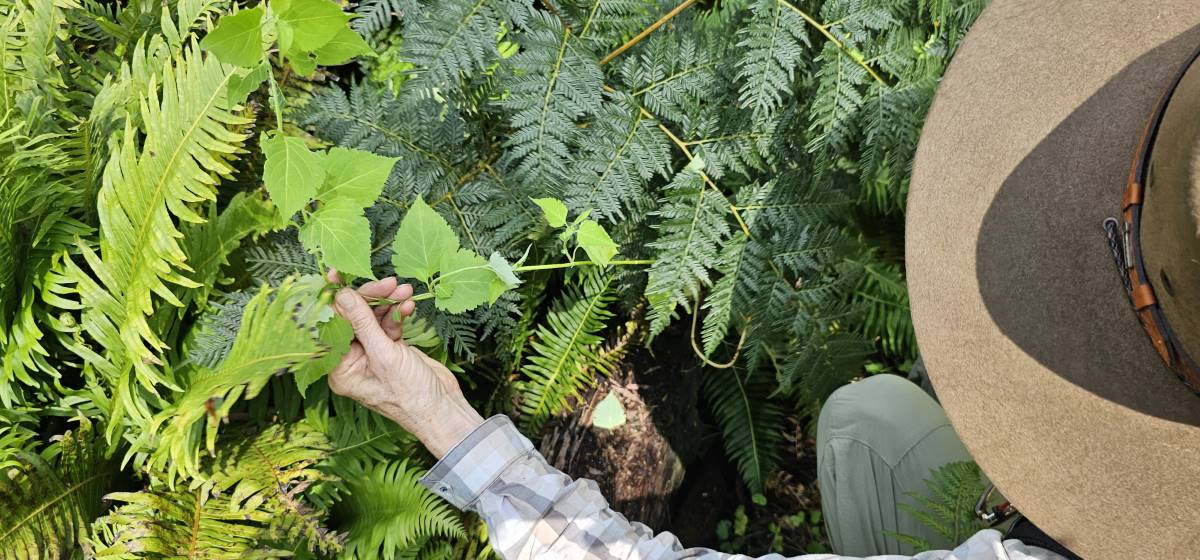
Marianne spotting Himalayan Honeysuckle in the swamp. (Hamish Dunlop)
When I mention Irish Strawberry trees to Elissa at Bushcare, she laughs. “She’s still going after that one!” Mina Howard, a former District Governor of Rotary, and a Mount Victoria resident, concurs that Marianne is always on the lookout for weeds. “She’s amazing. Dedicated to Bushcare and Landcare and selfless when it comes to the environment and the community.”
Weedy Creek
The colloquially named Weedy Creek is the only water course that crosses the highway from the residential area and feeds into the headwaters of the Grose River. The impact of this creek and what it carries can clearly be seen in the swamp at the top of the watershed. There is a mint infestation and Himalayan honeysuckles are sprouting. Soft drink bottles have made their way downstream too.
Experimenting with holly
“Being on a highway corridor with residential areas adjacent to catchments and the National Park makes acting at a local level critical,” Marianne says. “If I’m chatting to someone who has holly in their garden, I might ask if they’re wanting to keep it. If not, I’ll offer to kill it for them.”
Marianne is keen to emphasise that there are differing opinions on how best to kill holly. Her method does not involve immediate removal. In her experience, holly that is cut down and painted with herbicide is sometimes followed by regrowth that’s harder to treat. She favours a slower process with better statistical outcomes.
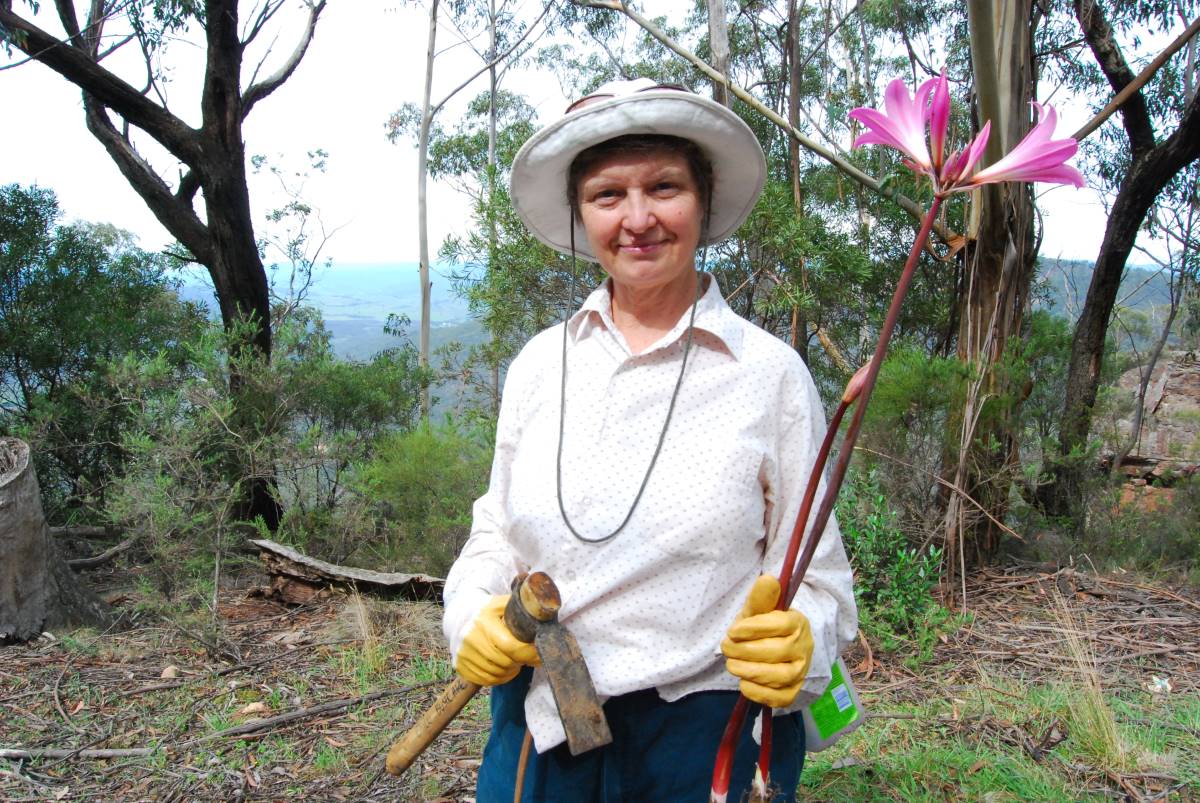
Not Holly, but a weed nonetheless! Marianne with invasive Belladonna Lily. (image supplied)
“I use a very slow acting technique,” she says. “I drill the trunks and fill the holes with Glyphosate. It can take up to a year for a big holly tree to die, but it’s a reliable process. Safety is incredibly important,” she continues. “Using herbicides requires appropriate skill, experience and protective equipment.”
Community recognition
Engaging with the community is not something everyone can do. It takes the application of care and attention to the environment and people. In recognition of her Landcare work, Marianne received the Landcare Legend Award at the 2019 Annual Bushcare Awards. This award recognised her ability to generate positive environmental outcomes and strengthen community relationships at the same time.
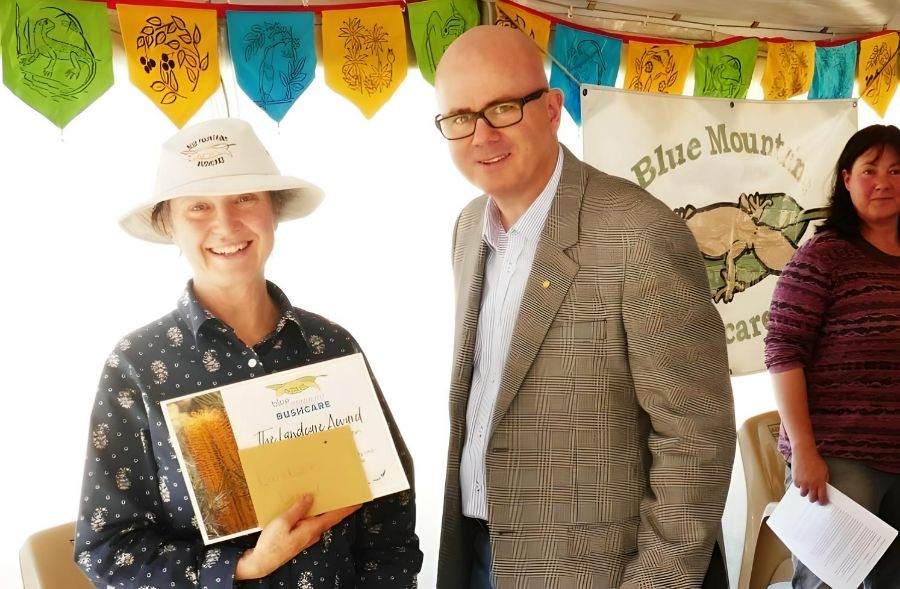
Marianne with Mayor Mark Greenhill at the 2019 Bushcare Awards (image supplied)
Covid weeds
During COVID, Marianne would meet with a few friends in the swamp to weed. The swamp burnt as part of the backburn to protect Mt Victoria from the Grose Vally fire in 2019/20. She says it was a great opportunity to be in nature and weed out the gorse seedling that had germinated because of fire.
“It was so much fun,” she reveals. “We got to watch the bush come alive again. Initially the swampy areas were emerald-coloured islands in the black. The sundews came back first. Wallaby poo appeared. The ants came out of the ground and the frogs resumed their choruses. It was truly beautiful.”
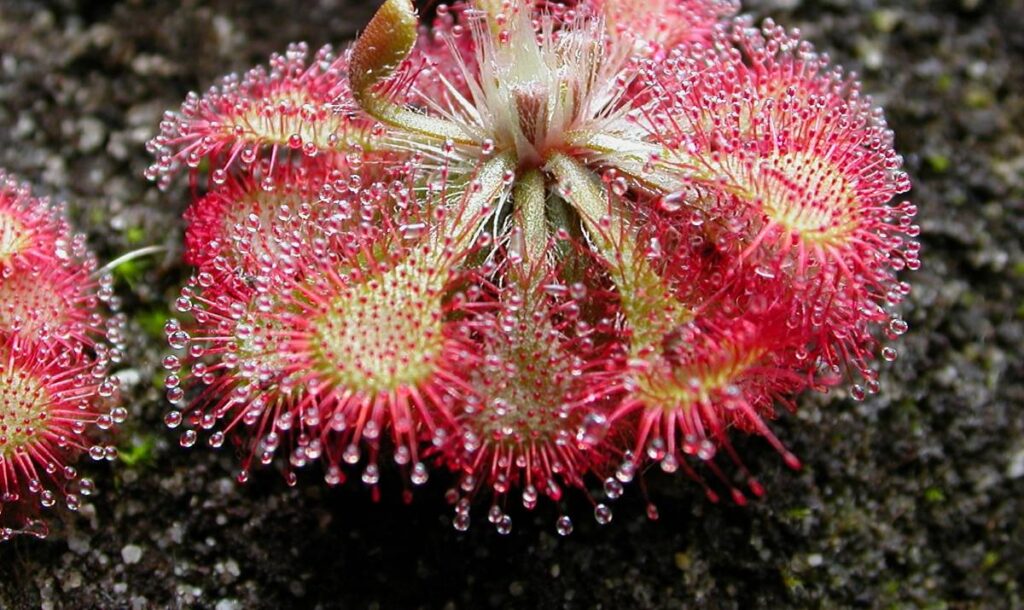
Drosera or Sundews coming back after the fires.
There is a wistfulness in how Marianne continues. “Connecting with place does something to you. I’ve found this especially true around extreme events such as a drought, flood, and fire. To go down into the swamp and watch how the land was trying to recover was healing. And we hoped that pulling out gorse and broom seedlings – our bit – was going to help.”
To be a swamp
While Marianne values the social and voluntary aspects of Bushcare and Landcare groups, she thinks its educational value is paramount. “A large percentage of bush in the Blue Mountains that’s not in the National Park is on private land. The Bushcare and Landcare programs provide a way for people to learn about how to manage their own properties,” she says.
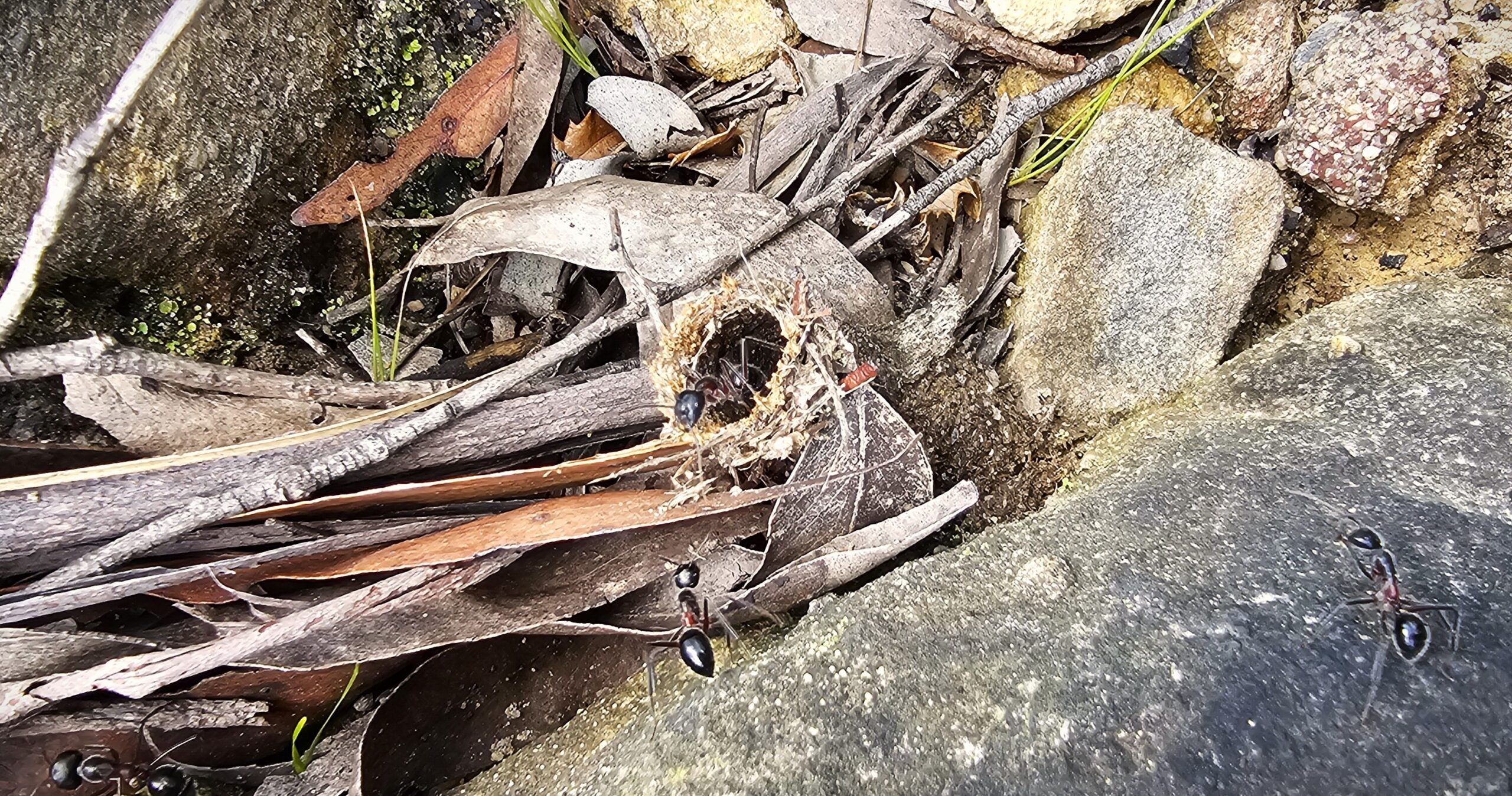
Ants entering their nest through a fibre and mud tube. (Hamish Dunlop)
Sometimes people message Marianne with images of plants and she helps where she can. ‘You’re right! That’s definitely a weed.’ is sometimes the reply. She stresses that managing weeds is not a war won in the short term. In the 1960s and 70s the Sydney-based Bradley sisters developed the Bradley Method. This emphasises clearing small areas around healthy native vegetation to facilitate bush regeneration. By focusing on what you are protecting, on something beautiful, you also don’t get overwhelmed by how much weed needs to be removed.
“You can’t necessarily pull everything out at once,” Marianne says. “That opens up the possibility of erosion and flow on effects can create a great environment for different weeds. Bush regeneration is about observation,” she says, “and understanding how things are connected. ‘What will happen if I do this or that?’ Asking questions. There’s also an important element of strategic trial and error.”
Snakes and butterflies
After doing a loop of the swamp we walk back towards the cemetery. A red-bellied black snake glides across our path and, further up the rough track, the air is dancing with common brown butterflies. Many species of ants are busy on and under the ground; some have built tubular entryways out of plant fibres and mud.
“This is what it’s about,” Marianne says, appealing to the untouched bush we’re walking through. This is why it’s so important to learn about where we live and make the contributions we can. I’ve observed how the small actions of a few people can make a difference. A sense of achievement comes with that. It’s something everyone can experience.”

Marianne next to a recovering Eucalypt burnt in the fire. (Hamish Dunlop)
Standing in Marianne’s driveway, we look at an incredible healthy patch of native Weeping grass. Over years, Marianne has removed the Cotoneaster tree that was there. “I’m not quite sure what to plant,” she muses, but sometimes I see the grey kangaroos have had a nibble. They are common around the streets up here.”
I’ve learnt something of what Marianne does for her community in the few hours we’ve spent together. Before parting, I put this to her. She pauses and defers to others, but her earnestness paints the backdrop to someone with enormous empathy for people and place.
Take Action:
- Take advantage of Bushcare and Landcare groups to find out how you can better manage your own property.
- Make observing a habit. Marianne says it has a way of connecting you with the world.
- Learn about one weed and do something small to support the Upper Grose River catchment.
Share this article:
This story has been produced as part of a Bioregional Collaboration for Planetary Health and is supported by the Disaster Risk Reduction Fund (DRRF). The DRRF is jointly funded by the Australian and New South Wales governments.
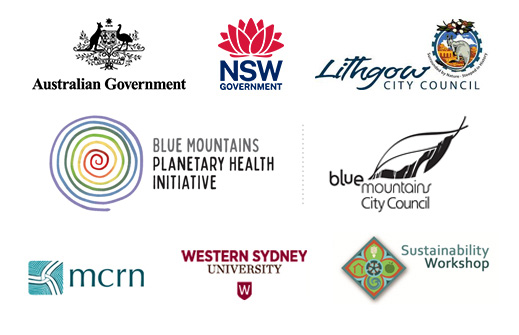
More from around the region
@ bluemountainsplanetaryhealth . Apr 2

@ bluemountainsplanetaryhealth . Apr 1

In our `How to Build a Survival Garden in the Blue Mountains` workshop on Saturday 5 April, we`ll be starting an Upper Mountains Seed Saving group and sharing seeds, tubers, recipes for more unusual foods, and information about the many ways we can create more food system diversity and resilience. Learn about skirret, salsify, collards, cardoons, sea kale, Good King Henry, mangel wurzel, oca, yacon and more. Places are limited so bookings essential here (link in profile) : bit.ly/4kVAUA8
#foodsystems #foodsecurity #fooddiversity #foodresilience #biodiversity #planetaryhealth #healthydiet #plantbased #katoomba #bluemountains
@ bluemountainsplanetaryhealth . Mar 31

Was that a frog or cricket you heard? Check out our video matching the photos of the 20 frogs of the Blue Mountains Mountains with their calls so you can learn the difference. View our exhibition, learn how to use the FrogID app, and how to build a frog pond and frog hotel, at our workshop this Saturday 5 April at 9am. Bookings via via link in profile. You can view our full video on YouTube (link in profile). Subscribe for more great content. #frogs #bluemountainsfrogs #planetaryhealth #katoomba #frogcalls #exhibition #workshop
@ bluemountainsplanetaryhealth . Mar 30

A huge thank you to the Blue Mountains Interfaith Group for organising an inspiring afternoon that brought community together and renewed our sense of connection, hope, wonder, shared purpose and commitment to care for our extraordinary planet. We had a full house with the Frogs of the Blue Mountains looking over our shoulders! Next Saturday 5 April we`ll be launching Saturday morning T`ai-chi and Qigong which will continue on the first Saturday of every month. Bookings essential here (link in profile): bit.ly/3Rn9RzY #interfaith #hope #wonder #commitment #connection #community #planetaryhealth #katoomba #bluemountains #taichi #qigong
@ bluemountainsplanetaryhealth . Mar 29

@ bluemountainsplanetaryhealth . Mar 29

@ bluemountainsplanetaryhealth . Mar 28

Our Planetary Health Newsletter is out! Read it here https://bit.ly/4l7sC89 (link in profile) to find out how Planetary Health has been at the core of Blue Mountains City Council`s Sustainability Model and Map for Action for 25 years and what it means; watch our `We Are Nature` video and our latest video on the Frogs of the Blue Mountains and all their calls; read about how we`re focusing on what connects us, not what separates us, at the Interfaith Gathering this Sunday 30 March; learn how you can take action for Planetary Health on Saturday 5 April with T`ai-chi & Qigong, workshops on the Frogs of the Blue Mountains and building Survival Gardens; and participating in Planetary Health Bushcare. There`s also still time to apply for our Conference and Events Organiser position at the Planetary Health Centre. You can subscribe to receive the newsletter at any of our local news sites, like www.katoombalocalnews.com (link in profile)
@ph_alliance
#planetaryhealth #sustainability #jobs #taichi #qigong #survivalgardens #frogs #bluemountains #katoomba #mapforaction #sustainabilitymodel #wearenature #interfaith #bushcare #community #action
@ bluemountainsplanetaryhealth . Mar 27

Did you know that this is a Screaming Tree Frog, and that there are at least 20 different known frogs in the Blue Mountains? Join our workshop on Saturday 5 April to view all of them at the Planetary Health Centre, and learn how to use the FrogID app to record and identify their calls. We’ll also be demonstrating how to build a pond or frog hotel to increase habitat for them. Reserve your spot in the workshop here (link in profile):
https://www.eventbrite.com.au/e/the-frogs-of-the-blue-mountains-tickets-1281801285149
Photo: Alexander Dudley
@frogidaus
#frogs #bluemountainsfrogs #screamingtreefrog #planetaryhealth #skillshare #habitat #froghabitat #frogcalls #katoomba #bluemountains
@ bluemountainsplanetaryhealth . Mar 26

We are starting Saturday morning T`ai-chi and Qigong at 8am on Saturday 5 April at the Planetary Health Centre.
Places are limited so bookings essential here (link in profile): https://bit.ly/3Rn9RzY
T`ai-chi and Qigong routines can increase mobility and strength, improve immunity and help build an inner calm - a great way to start the weekend!
The monthly practice at the Planetary Health Centre is suitable for people with a little or lots of experience. Join us on the 1st Saturday of the month at 8 am, to nourish your body, mind and spirit or 3 treasures (in Chinese, Jing, Chi and Shen, or San Bao)
Virginia Field is an experienced trainer of T`ai-chi/Qigong, with more than 30 years experience.
This activity is the first in a full day of Skillshare activities at the Centre:
8am T`ai-chi and Qigong
9am-3pm Fashion Upcycling
9am Frogs of the Blue Mountains and how to help them
10am-1pm How to Build a Survival Garden in the Blue Mountains
1.30-4.30pm Planetary Health Bushcare
Contact Lis on 0407 437 553 for more information.
#taichi #qigong #innercalm #mobility #personalhealth #planetaryhealth #katoomba #bluemountains #planetaryhealthcentre
@ bluemountainsplanetaryhealth . Mar 25

Bookings are now open for our very popular Upcycled Fashion Program on Saturday 5 April. Learn how to use a machine, how to mend, sew, adjust and remodel clothes, and how to create your own patterns to use up all that fabric you`ve been collecting! If you`re interested in earning money, you can also be supported to become part of the Repair Network helping keep textiles out of landfill. Places are limited so get in early to book your place here (link in profile):
https://bit.ly/4c2Go85 #upcycling #upcycledfashion #skillsharesaturday #planetaryhealth #keepingtextilesoutoflandfill #skillshare #katoomba #bluemountains #sustainability #socialenterprise
@ bluemountainsplanetaryhealth . Mar 24

We are looking for a Professional Conference & Events Organiser to join our team at the Planetary Health Centre! If you`re keen to make a difference and demonstrate how events can be run sustainably and help inspire change, we`d love you to work with us! Applications close 30 March. Scroll down to learn more here (link in profile): https://www.bmcc.nsw.gov.au/jobs and ring Lis on 0407 437 553 if you`d like to discuss. Please share if you know anyone who might be interested! #jobs #hiring #conferenceorganiser #eventsorganiser #planetaryhealth #careers #inspiringchange #sustainableevents #applynow
@ bluemountainsplanetaryhealth . Mar 23

Would you know what to prioritise if you needed to build a survival garden in the Blue Mountains? Do you know how families survived and stayed healthy during the Great Depression? What would you need to grow to provide all your nutritional needs on a plant based diet? How can you have fruit all year round in a cold climate? Have you grown salsify, skirret, yacon or American Ground Nut and would you know how to cook them? We’ll answer all these questions in our ‘How to Build a Survival Garden Workshop’ at the Planetary Health Centre from 10am to 1pm on Saturday 5 April. We’ll discuss how we can work together to make our local food system healthier and more resilient and we’ll have planting guides, recipes and some seeds, bulbs and tubers available to get you started. Places are limited so bookings essential here (link in profile): https://bit.ly/4kVAUA8
#growyourown #survivalgarden #salsify #skirret #yacon #oca #bluemountains #permaculture #planetaryhealth #seedsaving #foodsecurity #healthyfood #gardening #communityfarming



